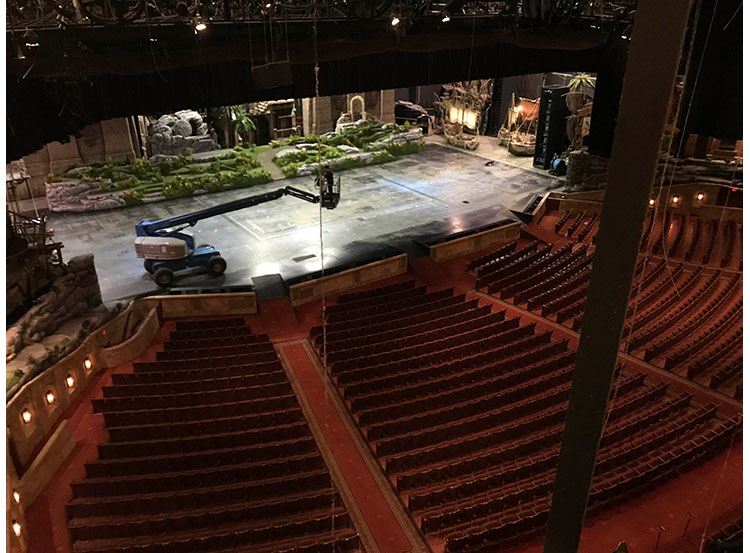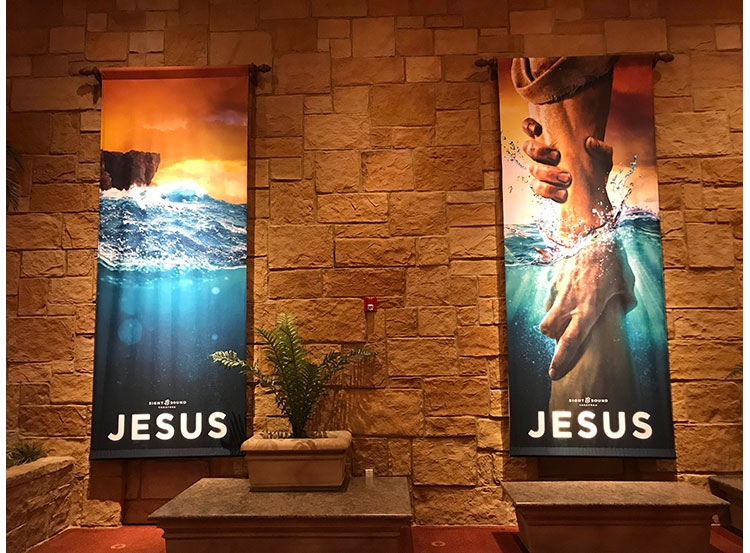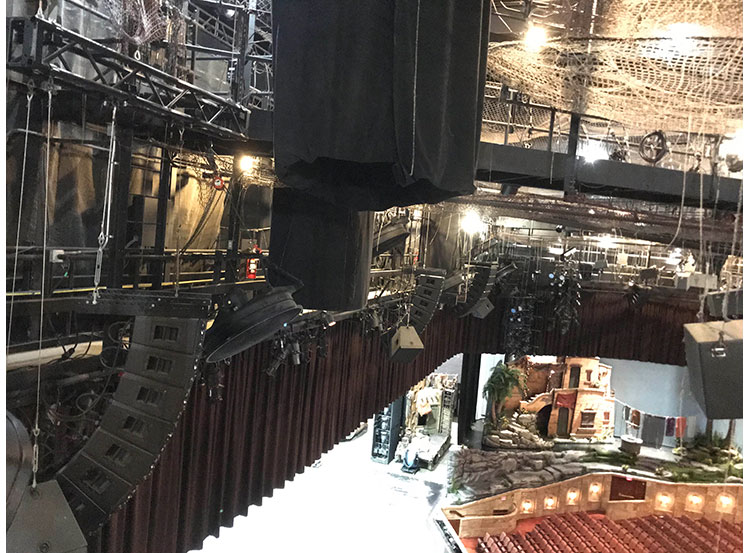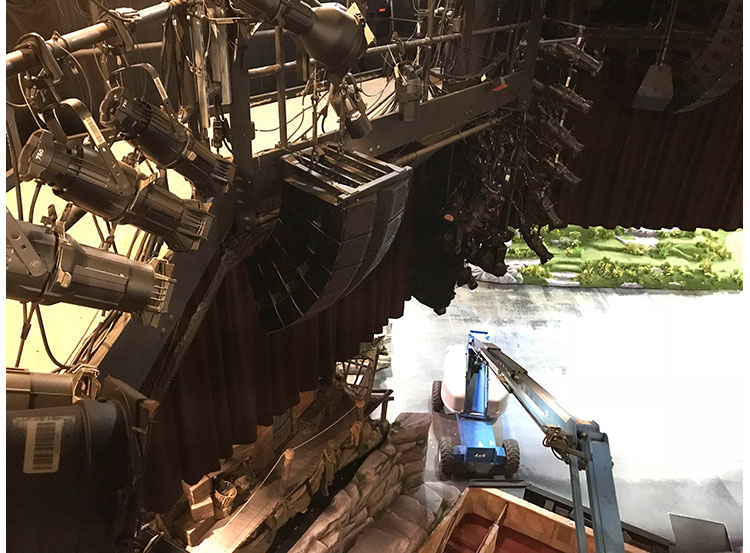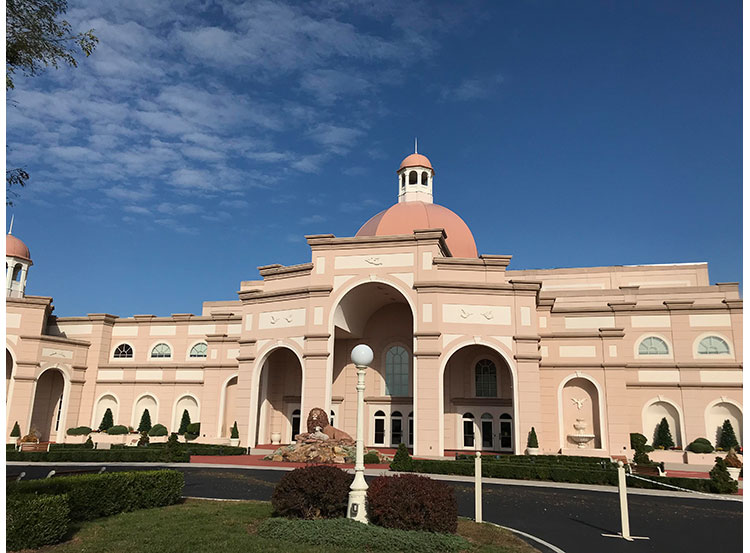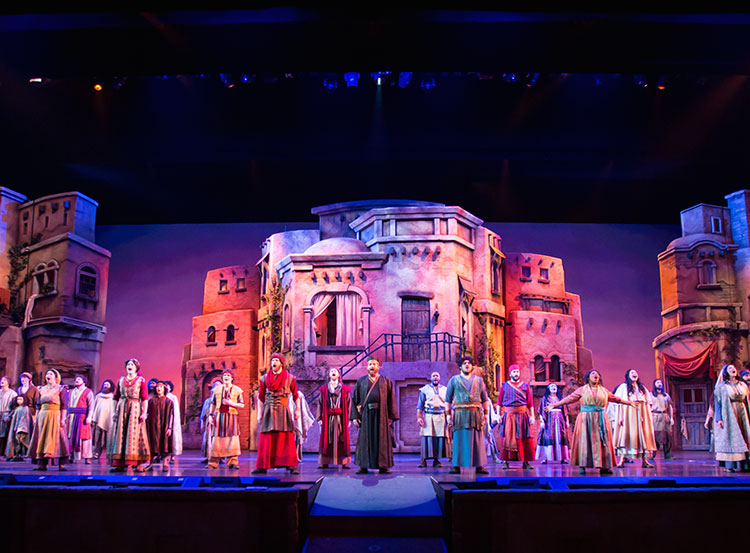This website uses cookies so that we can provide you with the best user experience possible. Cookie information is stored in your browser and performs functions such as recognising you when you return to our website and helping our team to understand which sections of the website you find most interesting and useful.
EMEA & APAC AWARDS • THE AMERICAS AWARDS
Sight & Sound Theatres
For over 40 years, Sight & Sound Theatres have been bringing the bible to life for the American public through their live and epic-scale biblical productions. Founded by Glenn and Shirley Eshelman in 1976, what started off as fairly simple storytelling has evolved into state-of-the art multimedia immersive theatre that sees more than a million people through the doors each year and is now billed as “the largest faith-based live theatre in America”.
Sight and Sound’s productions are developed on a huge scale. Getting from initial concept to opening day on the two-and-a-half-hour shows takes 42 months, with almost everything done in-house, from story development to costume design and choreography. Every production that premieres at the Lancaster venue, which involve sizeable and busy casts, including live animals, is also designed to travel to its sister theatre in Branson, Missouri to run the following season.
As with previous shows, their latest production, Jesus, spreads across a 92-metre wraparound stage of the company’s 2,000-seater Lancaster County, Pennsylvania venue. With stage sets either side of the audience as well as in front, this requires strategic localisation of performers mics to maintain intelligibility and audience engagement, plus 3D moving surround effects including physical objects flying above the audience to further ensure their total immersion in the storylines. Sight and Sound therefore specified TiMax for spatial reinforcement and im-mersive audio, in the form of a 64×64 TiMax SoundHub-S64 object-based spatial audio platform and TiMax Tracker performer-tracking showcontrol.
Gary Parke, audio integrator for Sight & Sound, explains that the TiMax TimeLine workflow and accessibility to editing the image definition objects for the spatialisation are major benefits which provide much considerable flexibility in controlling the actors’ mics in relation to their stage zones. As well as the performer-tracking automation, some cues are timecode triggered to move different mic groups or channels between zones as the actors move around the stage.
Due to the size of the venue, creating a uniform stage panorama soundscape for the entire audience had always been problematic, but Parke asserts, “TiMax has given us greater control and flexibility in setting up the image definition spatialisation especially for our many fill speakers. This allows for better vocal imaging for more patrons instead of just those in the main array coverage. Without TiMax, we wouldn’t have the detailed control necessary to get the vocals to image as well on the fill systems, with the proper delays”
To cater for the essential dual-site production compatibility, the spatial audio and showcontrol system at the Missouri venue is as far as possible a duplicated version of the first venue. This ensures show audio content and programming files can be sent on ready to mount the new production to ensure the simplest show transfer. For this reason, Sight and Sound invested in a second TiMax SoundHub-S64 for the Branson venue and a further TiMax Tracker system is scheduled for when the Jesus production makes its move to Branson.
The audio system at the Missouri venue is also as far as possible a duplicated version of the first venue. Seventy channels of wireless microphones worn by the actors are fed via Dante from a Studer Vista console to the 64-channel TiMax SoundHub, either direct or as groups. Ti-Max Cues or TiMax Tracker dynamically morph them between level/delay spatial image defini-tion objects via the distributed house sound system, comprised of four hangs of QSC Wideline 10 with four Clair Brothers C8-i line arrays for the side surrounds and a further 27 full range speakers for overheads. Sub support is provided by a central cardioid array centre-house of eight Clair CS218s, with four EAW SB1000s positioned out front amongst the audience. Fill for the front and side stages is delivered via 26 EAW JF80s with six EAW full range speakers man-aging the rear surround on the main floor and a further four full range surrounds covering the raised seating area.
Such seamless vocal imaging and movement ensures all Jesus audience members remain fully immersed and engaged – despite the stage surrounding them on three sides and sets that can reach up to four storeys in height. Extra credibility and enhancement are injected into the show’s shifting mise-en-scene with fully enveloping 3D ambience effects, with playback from both QLab and TiMax dynamically spatialised by TiMax with cues triggered from timecode.
Speaking about the overall integration of TiMax and its ability to meet the unique scale and configuration challenges of Sight & Sound’s production audio, Parke emphasises the ease of programming and flexibility of TiMax as significant factors, with the highly visual TimeLine approach to object-based mixing and timecode integration making it straightforward to program and manage these complex shows.

